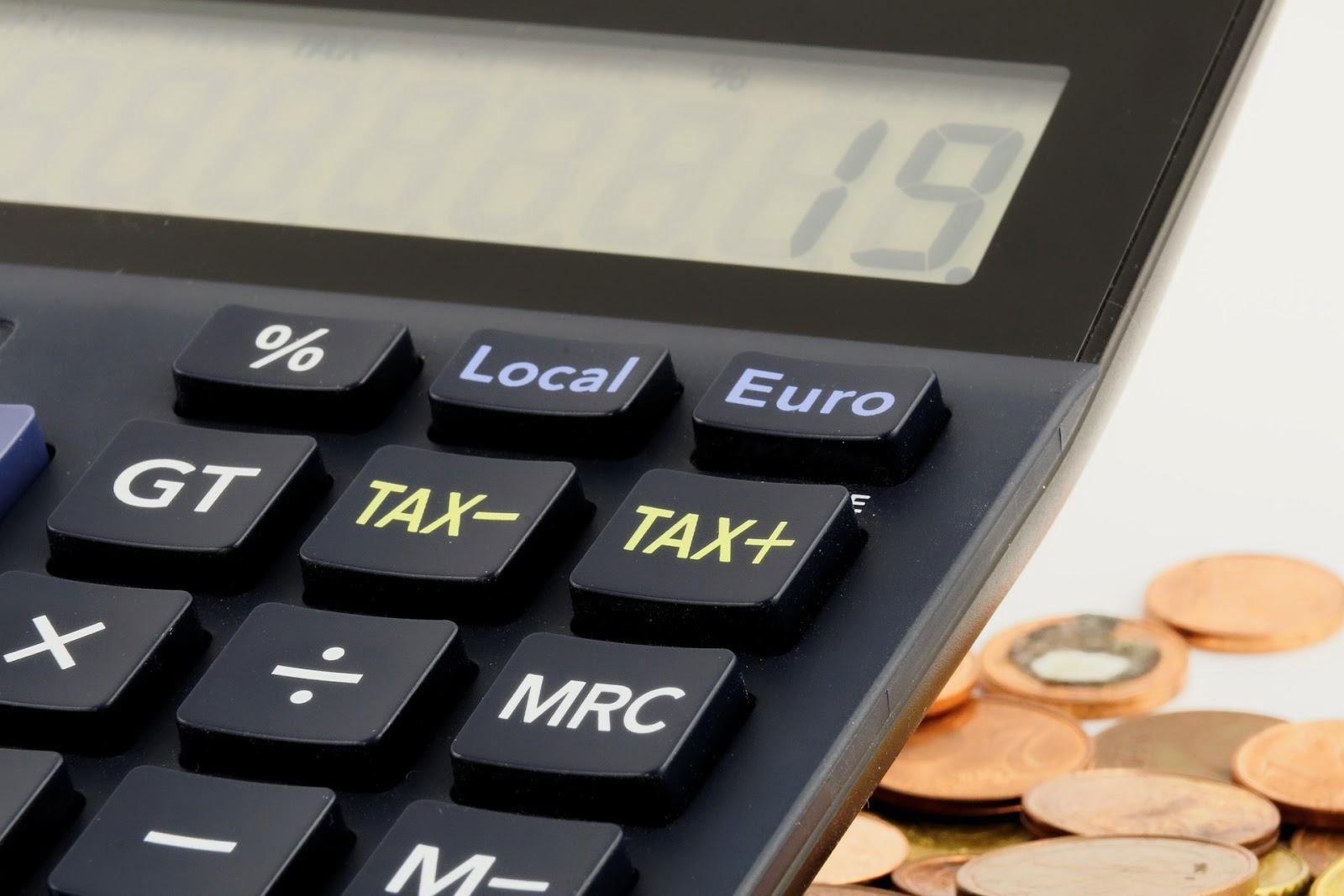As you’re probably looking to maximize profits from your investment property, you should learn how to minimize your tax liability. If you took advantage of the depreciation method for tax deductions, know that the IRS will come knocking. The IRS will want to get some portion of that money back through depreciation recapture. This isn’t helping your total tax bill at all!
Luckily, there are some tax deferral strategies you could use to increase your profits in the real estate world. Namely, we’re thinking about a 1031 exchange or “trading up”. With the option to invest the profits into another “like-kind” rental property (both residential and non-residential real estate), you can avoid paying capital gains and other taxes altogether.
Let’s further discuss 1031 exchanges, depreciation recapture, and capital gains taxes and save you from a hefty tax bill!
What Is Depreciation Recapture?
Depreciation recapture is the part of your gains from selling a depreciable investment property. It’s the difference between the sale price of the property and the adjusted cost basis. You need to account for this because of the depreciation you took on your real property for previous years also known as accumulated depreciation.
Usually, property owners use depreciation to deduct the purchase price and improvement costs on the rental property from their taxable rental income. The IRS declares what percentage of an asset’s value may be deducted each year and for how long. Depreciation deduction can’t be done on undeveloped land as that generally doesn’t decrease in value.
When you’re doing taxes, you are conducting cost segregation. Different personal property assets are grouped with real property assets to avoid the maximum rate of tax. Some investors even do the cost segregation study to identify all property-related costs that can be depreciated and gain attributable deductions. Those allowable depreciation deductions can help you with your tax bill on your investment and personal property by utilising either straight-line depreciation or accelerated depreciation.
As you can see, a property owner is looking to bring down taxes on both the commercial or residential property so any kind of allowable depreciation helps immensely. It doesn’t matter whether you own an apartment building, commercial or certain residential real estate, depreciation can be applied on any property. However, when you sell the property, depreciation recapture applies, which is, as said, the amount of depreciation claimed that has accumulated over the years.
Now that you know what depreciation recapture is, let’s see what happens when you add depreciable real estate into your tax return. Simply put, you need to pay ordinary income tax instead of the capital gains tax on one portion of the profits.
For a reminder of tax rules, the capital gains tax is 15-20%, while the ordinary income rates are 10%, 12%, 22%, 24%, 32%, 35%, and 37%, depending on your income bracket. When it comes to real estate assets, depreciation that isn’t recaptured as ordinary income will be taxed at a rate of 25%. A 1031 exchange provides the option to defer these taxes and invest all your gains in a new property.
How Depreciation Recapture Works
Let’s take a look at an example of how depreciation recapture works. Say a homeowner purchases a property for an initial cost basis of $10 million, with an annual depreciation expense of $50,000.
The homeowner decides to sell the asset in the sixth year of ownership for $11,500,000.
During the investment term, the total depreciation claimed is $50,000 x 5 years = $250,000. This means the adjusted cost basis after a five year term is $10,000,000 – $250,000 = $9,750,000.
The gain from the sale is treated as ordinary taxable income. It is calculated by taking the sale price minus the adjusted cost basis, so $11,500,000 – $9,750,000 = $1,750,000.
From the $1,750,000 gained by the homeowner from the transaction, the depreciation portion of this will be taxed the same as the homeowner’s normal income tax rate, and the remaining profit is known as a “capital gain” and is taxed at a capital gains tax rate.
The $250,000 ($50,000 x 5) depreciation deductions are therefore filed as ordinary income.
The rest of the amount, which is $1,750,000 – $250,000 = $1,500,000, will be treated as capital gain. Since the depreciation recapture tax rate is 20% and capital gain tax rate is 15%, then:
$250,000 x 20% = $50,000 (Amount of depreciation recapture that is taxed)
$1,500,000 x 15% = $225,000 (Amount of capital gain that is taxed)
The total tax paid between depreciation recapture and capital gains in the transaction is then $275,000.
If we take a look at each individual year from this example, assuming the sale price would remain unchanged, here’s what the numbers would look like:
[table id=1 /]
How Is Depreciation Recapture Taxed?
As the IRS notes in proposed schedules, residential real estate has a useful life of 27.5 years (for a commercial building that’s 39 years), which means you can depreciate a certain percentage of the cost basis each year. This percentage varies in accordance with the use of the property during the year and it’s usually calculated by dividing cost basis by useful life years.
So how is depreciation recapture taxed? Once you sell real estate property, the depreciation you claimed will influence the amount you owe to the IRS. This is in the form of depreciation recapture tax, which is generally taxed as ordinary income. Yet, as said, you can invest the money from the sale in another investment property and avoid that tax liability.
Depreciation might seem a bit complex after a 1031 exchange because you can’t just start a new 27.5-year schedule with your replacement property. A 1031 exchange has a lot of specific rules. You know most of them already, so we’ll go straight to the possible scenarios for depreciation expenses. What will happen when you account for the values of your relinquished and replacement properties?
Scenario 1: Your Replacement Property Costs the Same As Your Relinquished Property
After a 1031 exchange, your replacement property includes the entire financial history of your relinquished property. Hence, your original cost basis transfers to the new property. If your new real estate acquired costs the same as your relinquished property, prior depreciation is the same too. You calculate depreciation rates and recapture according to the adjusted cost basis, which will be the same for both properties.
Scenario 2: Your Replacement Property Costs More Than Your Relinquished Property
If the replacement property costs more than your relinquished property, the situation becomes a bit more complex. Namely, the difference is added to the cost basis after which you’ll calculate depreciation based on the chosen schedule.
Let’s include numbers for clarification:
- You purchased real property for $200,000 five years ago. Previously allowable depreciation was accounted for at $30,000 which brings your adjusted cost basis to $170,000.
- If you sell the property for $300,000, you’d have a $130,000 capital gain. However, you don’t want to pay capital gains tax so you do a 1031 exchange and acquire another property.
- The new property is valued at $350,000, which is more than your relinquished property’s worth.
- In this case, the cost basis of $170,000 will transfer over and the $50,000 in additional money you’ve spent on acquiring a replacement property will be added to the amount too, which brings your new cost basis to $220,000.
Simply put, you can calculate the cost basis of your replacement property by subtracting the capital gains from the entire acquisition cost. In the example above, that is $350,000 minus $130,000 which is a $220,000 cost basis.
Scenario 3: Your Replacement Property Costs Less Than Your Relinquished Property
Replacement property in a 1031 exchange must be equal, or greater in value than the relinquished property. If it’s less than value, you’ll have to pay tax on the boot. The boot is the money or cash equivalent (debt relief or personal property) received in exchange to compensate for the difference in value. Hence, you shouldn’t trade down if you want to have a completely tax-free exchange.

Mitigating Taxes After A 1031 Exchange
As every tax advisor notes, paying taxes can’t be avoided. However, the 1031 strategy allows you to defer taxation and keep investing without a tax liability. It’s better to pay just one capital gains tax in the end than to pay taxes after each sale. With a 1031 exchange, you’ll be able to use your capital gains for new investments, which means you’ll scale up your portfolio tax-free.
Naturally, you’ll have to follow the IRS rules such as finding a qualified intermediary and following a strict time schedule, but you won’t pay taxes on your property. There will not be a capital gains tax for your property, nor will the depreciation be taxed as ordinary income. Just tax-free investments with the remaining gain from the sale.
Step 1: Finding a Like-Kind Exchange
As said, a 1031 exchange allows you to defer your tax liability and invest all the funds from the sale into another asset, but this needs to be another “like-kind” property. Like-kind properties are similar in nature or character but not in type, quality, or grade. Hence, this process is often called “trading up” because you’ll be using the profits from the asset sold to invest in new and better capital assets.
Step 2A: IRS Separate Depreciation Schedules
When you calculate your net cost basis, you can start the depreciation period on the replacement property. You have both the option to split the depreciation into two schedules or opt-out from the previous schedule and depreciate the entire cost basis on a new schedule.
If you choose to have separate depreciation schedules, excess depreciation from your relinquished property will continue on the original time schedule. You will keep the original cost basis until the end of the 27.5 year time frame. The rest of the adjusted basis in the replacement property is depreciated on a new schedule of another 27.5 years, which begins when the 1031 exchange is finalized.
This depreciation method might prove more profitable for reducing your taxable rental income in the long run. Note that your accountant will probably use the declining balance method, an accelerated depreciation system, to record larger depreciation expenses during the first years of useful life for your capital asset.
Step 2B: Classify the Replacement Property as a New Asset
If you choose to depreciate on a new schedule, you’ll treat your replacement property as a new asset. You’ll use the entire cost basis to calculate your annual depreciation deductions. This straight-line depreciation is a much simpler option, but your deductions might be a bit smaller.

Still Need Help? We have the solution!
We hope that 1031 exchanges, depreciation recapture, and capital tax liability are a bit clearer in your mind now. The 1031 exchange can be quite complicated because the IRS has very strict rules when it comes to mitigating taxes. Luckily for you, we can help you through the entire process completely pain-free. Let us do all the hard work and advise you on the best tax-saving measures that will increase your profits from every real estate investment you make!
If you’re looking to make a 1031 exchange fast, please reach out to us and we’ll connect you with other real estate investors looking to make a quick deal.
FAQ
[sp_easyaccordion id=”16908″]

